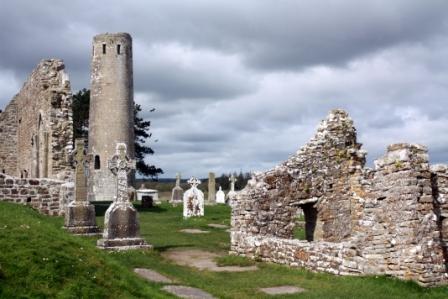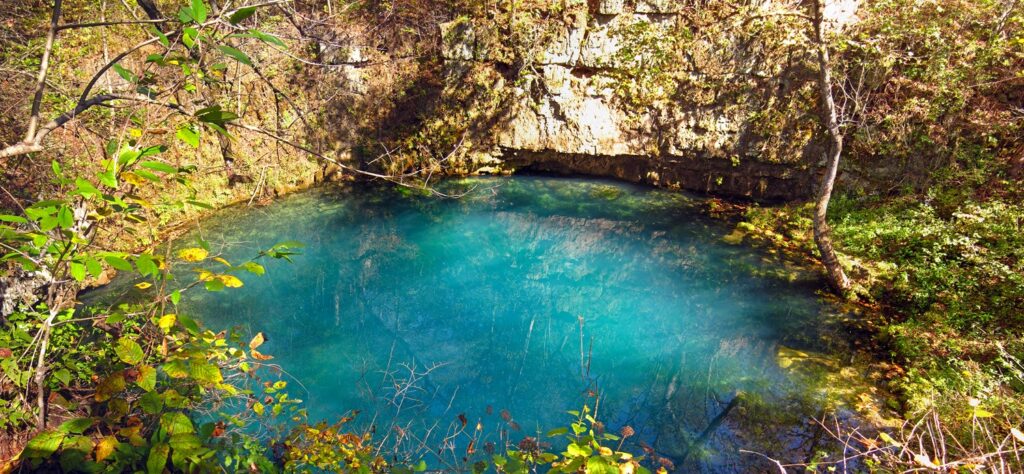
Nestled along the serene banks of the River Shannon in County Offaly lies one of Ireland’s most iconic and evocative landmarks: Clonmacnoise Monastery. This ancient monastic site, founded in the 6th century, stands as a testament to Ireland’s Golden Age of monasticism, when the island was renowned as a beacon of learning, art, and spirituality.
Clonmacnoise is much more than an archaeological treasure. It is a sacred place imbued with history, faith, and the enduring resilience of a people who found meaning and inspiration in its hallowed grounds. In this contemplative journey, we’ll delve into the history, significance, and enduring allure of Clonmacnoise Monastery.
The Birth of Clonmacnoise: A Monastic Vision
Clonmacnoise was founded around 544 CE by Saint Ciarán (Ciarán mac an tSaeir, or “Ciarán the Carpenter’s Son”). Unlike many other saints who came from noble lineages, Ciarán’s humble origins as the son of a craftsman reflected the egalitarian ideals of early Irish monasticism.
Legend holds that Ciarán chose the site for Clonmacnoise because of its central location at the crossroads of the River Shannon and an ancient east-west land route. This strategic position made the monastery an accessible and ideal center for education, trade, and pilgrimage.
Ciarán’s time at Clonmacnoise was brief—he died of a plague just seven months after its founding—but his vision endured. His followers expanded the monastery, transforming it into a flourishing community that became a beacon of Christianity and learning.
Clonmacnoise During the Golden Age
From the 8th to the 12th century, Clonmacnoise reached its zenith as a hub of religious, cultural, and intellectual activity. It was a center of manuscript illumination, metalworking, and sculpture, producing some of the finest examples of early medieval Irish art.
1. A Center of Learning
Monasteries like Clonmacnoise played a pivotal role in preserving classical knowledge during the so-called Dark Ages. Scribes at Clonmacnoise copied and illuminated manuscripts, blending Christian themes with Celtic artistic traditions. The monastery’s library would have housed numerous religious and scholarly texts, attracting scholars from across Europe.
2. High Crosses and Artistry
Clonmacnoise is renowned for its high crosses, masterpieces of early Irish sculpture. The most famous is the Cross of the Scriptures, a 4-meter-high sandstone cross intricately carved with biblical scenes, Celtic patterns, and depictions of saints. These crosses served not only as devotional objects but also as teaching tools, illustrating biblical stories for a largely illiterate population.
3. Ecclesiastical Power
By the 10th century, Clonmacnoise had become a major ecclesiastical center, rivaling Armagh and Kildare in influence. It was the burial site for kings from various Irish kingdoms, including the Connacht and Tara dynasties. The presence of royal graves underscored the monastery’s importance as a spiritual and political symbol.
Challenges and Decline
Clonmacnoise’s prominence also made it a target for raids and attacks. The monastery endured repeated Viking raids during the 9th and 10th centuries, as well as attacks by rival Irish clans. These incursions led to the destruction of buildings, manuscripts, and treasures, but the resilience of its monastic community ensured its survival.
By the 12th century, however, the monastery’s influence began to wane. The Norman invasion of Ireland in the late 12th century marked a turning point, as new centers of power and learning emerged. Clonmacnoise remained an important religious site but gradually declined in prominence.
The Dissolution of the Monasteries under Henry VIII in the 16th century dealt a final blow, leading to the abandonment of the site as an active religious center. Despite this, Clonmacnoise remained a place of pilgrimage, its ruins standing as a silent witness to centuries of devotion and strife.
The Spiritual Landscape of Clonmacnoise
Walking through the ruins of Clonmacnoise today is a profoundly moving experience. The site comprises a collection of churches, high crosses, round towers, and grave slabs, each bearing silent testimony to the passage of time.
1. The Churches
The site contains seven churches, including the Cathedral, the largest structure, and Temple Ciarán, a small chapel said to mark the saint’s burial place. These buildings, though weathered, retain an austere beauty that speaks to the simplicity and devotion of early Irish monastic life.
2. Round Towers
The two round towers at Clonmacnoise, O’Rourke’s Tower and McCarthy’s Tower, served as bell towers and places of refuge during times of attack. Their slender forms rise above the landscape, symbols of resilience and continuity.
3. Grave Slabs
Clonmacnoise is home to one of the largest collections of early Christian grave slabs in Ireland, with over 700 examples. These slabs, many intricately carved with crosses and inscriptions, provide insights into the lives and faith of those who lived and worshipped here.
Legends and Folklore
Clonmacnoise is not only a historical site but also a place steeped in legend. Local folklore tells of Saint Ciarán’s miracles, including tales of healing and visions. The River Shannon itself is said to carry a spiritual connection to the monastery, its flowing waters symbolizing the eternal life promised by faith.
One of the most enduring legends is that of the Clonmacnoise Bell, which, according to tradition, could be heard ringing across the land on special feast days, calling the faithful to prayer even after the monastery was abandoned.
Clonmacnoise Today: A Place of Reflection
Today, Clonmacnoise is managed by the Office of Public Works and remains a popular destination for tourists, pilgrims, and history enthusiasts. The visitor center provides valuable context, housing replicas of the high crosses and offering exhibitions on the site’s history.
For many, however, the real magic of Clonmacnoise lies in simply walking among its ruins. The quiet beauty of the site, with the River Shannon meandering gently in the background, invites contemplation and connection with the past.
Annual Pilgrimages
The tradition of pilgrimage continues, with annual gatherings to celebrate Saint Ciarán’s feast day on September 9. These events bring together people from all walks of life, affirming the monastery’s enduring spiritual significance.
Why Clonmacnoise Matters
Clonmacnoise is more than just an archaeological site; it is a microcosm of Ireland’s history, encapsulating the country’s spiritual, cultural, and artistic achievements. It tells the story of a people who, despite invasions, wars, and upheavals, found solace and inspiration in their faith and creativity.
Visiting Clonmacnoise is a reminder of the resilience of the human spirit and the enduring power of sacred places to inspire reflection and connection.
Explore Ireland’s Hidden Heritage
Clonmacnoise is one of many remarkable sites that showcase the richness of Ireland’s history and culture. To discover more about Ireland’s hidden treasures, visit Secret Ireland.
From ancient monastic sites to mythical landmarks, Secret Ireland offers a gateway to exploring the stories and legends that make Ireland unique. Journey into the past and experience the timeless beauty of Ireland’s heritage.


